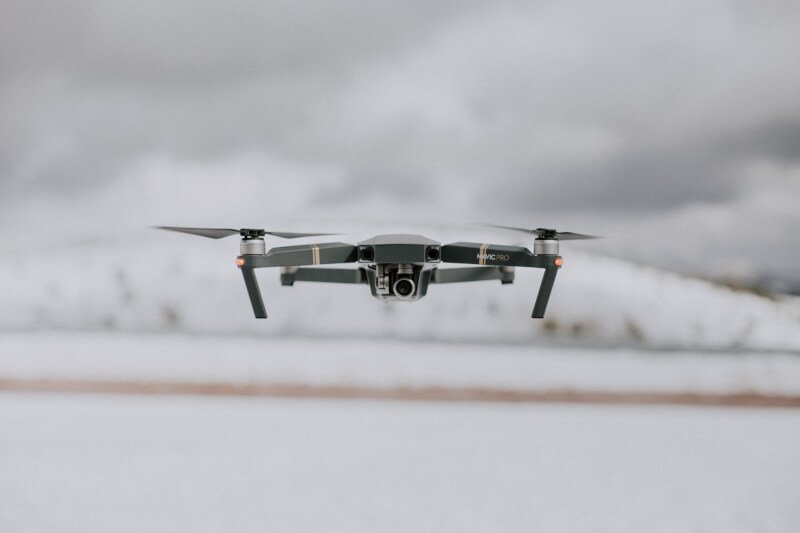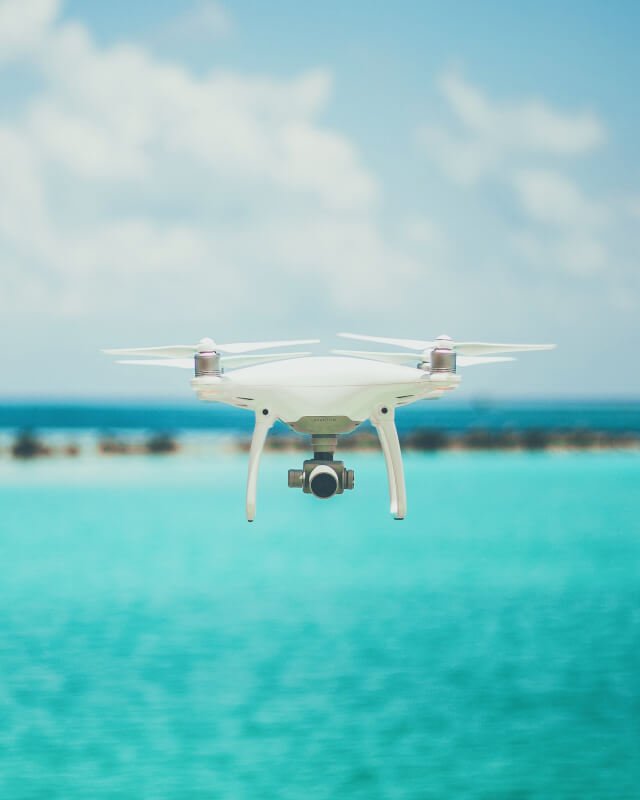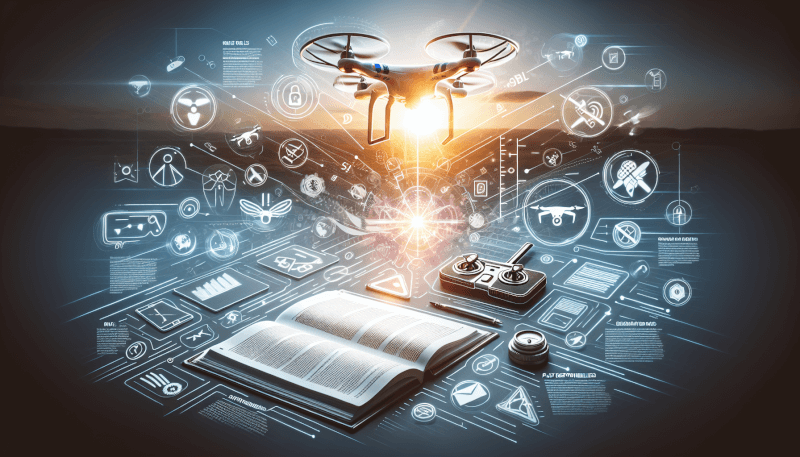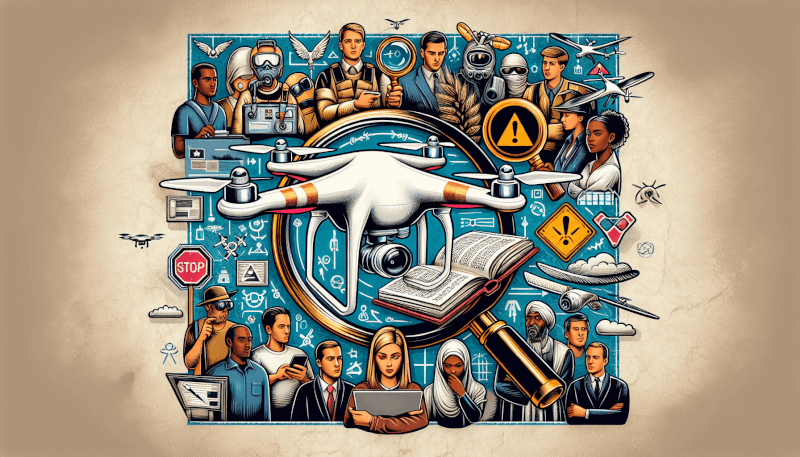Are you an avid drone pilot or considering taking up this exciting hobby? Then, you won’t want to miss out on the latest regulations and laws that are in place for drone pilots. Stay informed and fly responsibly by familiarizing yourself with these important guidelines. From registration requirements to airspace restrictions, this article will provide you with all the essential information you need to navigate the skies safely and legally. So, strap in and let’s take flight into the world of drone regulations.

Registration and Licensing
Federal Aviation Administration (FAA) Registration
When it comes to flying a drone, it is important to understand the registration and licensing requirements set forth by the Federal Aviation Administration (FAA) in the United States. In order to operate a drone legally in the US, you must register your drone with the FAA. This process helps ensure that drones are being operated safely and responsibly. By registering your drone, you are also providing important information that can be used to retrace ownership in case of any incidents or accidents involving your drone.
Specific License Requirements in Different Countries
It is crucial to note that regulations and license requirements for drone pilots may vary from country to country. While the FAA registration is specific to the United States, other countries may have their own registration and licensing procedures. It is your responsibility as a drone pilot to research and understand the specific requirements set by the governing body of the country in which you plan to fly your drone. Failure to comply with these requirements may result in fines or other penalties.
Importance of Proper Licensing and Registration
Obtaining the necessary licenses and registrations for operating a drone is not only a legal requirement but also plays a vital role in ensuring the safety of the airspace and those on the ground. By undergoing the proper licensing and registration processes, you are demonstrating your commitment to responsible drone operation and adherence to regulations. Proper licensing and registration also provide accountability and help authorities take appropriate action in case of any violations or incidents involving your drone.
Remote Pilot Certification
FAA’s Part 107 Remote Pilot Certification
The FAA’s Part 107 remote pilot certification is designed for individuals who want to operate drones for commercial purposes. This certification is required if you intend to use your drone in connection with any commercial enterprise or business. By obtaining the Part 107 remote pilot certification, you demonstrate your knowledge of FAA regulations, aeronautical charts and maps, airspace classification, weather patterns, and other essential aspects of safe and responsible drone operation. It is important to note that this certification is not required for recreational drone flying.
Certification Process and Requirements
To obtain the Part 107 remote pilot certification, you must meet specific requirements set by the FAA. These requirements include being at least 16 years old, being able to read, speak, write, and understand English, and passing an aeronautical knowledge test. The aeronautical knowledge test covers various topics such as airspace regulations, airport operations, weather patterns, and drone operation rules. Once you have passed the test, you will receive a remote pilot certificate, which allows you to legally operate drones for commercial purposes.
Training and Study Resources
In order to prepare for the Part 107 remote pilot certification exam, it is important to utilize the available training and study resources. The FAA provides comprehensive study materials, including the Remote Pilot – Small Unmanned Aircraft Systems Study Guide, which covers all the essential topics included in the exam. Additionally, there are various online courses and training programs offered by FAA-approved training providers that can help you better understand the regulations and concepts related to drone operation. Taking advantage of these resources can significantly increase your chances of passing the exam and obtaining the remote pilot certification.
Drone Flight Restrictions
No Fly Zones and Restricted Airspace
As a drone pilot, it is important to be aware of the designated no-fly zones and restricted airspace. These areas are off-limits for drone operation due to safety or security concerns. No-fly zones typically include areas such as airports, military bases, and national parks, among others. Restricted airspace, on the other hand, may be temporarily designated for specific purposes such as during sporting events or public gatherings. Adhering to these restrictions is crucial for maintaining the safety of the airspace and avoiding any potential conflicts or accidents.
Permission Requirements for Restricted Zones
In some cases, you may be able to obtain permission to fly your drone in restricted zones. This typically involves seeking approval from the relevant authorities, such as the FAA in the United States. This process may require submitting a request detailing the purpose and duration of your intended flight and demonstrating that you have taken necessary precautions to ensure safety. It is important to note that obtaining permission for restricted zones may not always be possible, and it is essential to respect the restrictions in place to avoid legal consequences.
Temporary Flight Restrictions (TFRs)
Temporary Flight Restrictions (TFRs) are an important aspect of drone flight restrictions that you must be aware of. TFRs are temporary airspace restrictions that are put in place to protect the airspace from potential hazards, such as wildfires or presidential visits. It is crucial to stay updated on any TFRs in your area before planning to fly your drone. Ignoring TFRs can not only put the safety of the airspace at risk but also result in severe penalties and legal consequences.
Visual Line of Sight (VLOS) Requirements
Understanding Visual Line of Sight Concept
Visual Line of Sight (VLOS) refers to the requirement that drone pilots must maintain visual contact with their drone at all times during flight. This means that you should be able to see your drone with unaided vision, without relying on binoculars or other visual aids. The VLOS requirement is in place to ensure that you can effectively monitor your drone and its surroundings to avoid any potential collisions or accidents.
VLOS Rules and Limitations
When flying your drone, it is important to understand the rules and limitations associated with Visual Line of Sight (VLOS). According to FAA regulations in the United States, your drone must be operated within your visual line of sight and not beyond the ability to see its orientation and flight path. This means that you should avoid flying your drone in low visibility conditions such as fog, heavy rain, or darkness. Additionally, you should position yourself in a way that allows continuous visual contact with your drone throughout the flight.
Exemptions and Waivers
In certain cases, it is possible to obtain exemptions or waivers to the Visual Line of Sight (VLOS) requirements. The FAA, for example, allows for waivers in specific circumstances where drones are used for research, training, or other non-standard purposes. To obtain such exemptions or waivers, you must provide a detailed explanation of the intended use and demonstrate that alternative safety measures are in place. It is important to note that exemptions and waivers are granted on a case-by-case basis, and not all requests may be approved.

Commercial Drone Operations
Part 107 Commercial Operations
Part 107 of the FAA regulations outlines the rules and requirements for commercial drone operations in the United States. If you plan on using your drone for any commercial purposes, such as aerial photography, surveying, or delivery services, you must adhere to the regulations specified in Part 107. These regulations include obtaining a remote pilot certification, maintaining visual line of sight with the drone, operating within specific altitude limits, and avoiding flight over people.
Insurance and Liability Considerations
When engaging in commercial drone operations, it is important to consider insurance and liability coverage. While the FAA does not explicitly require insurance for commercial drone operators, it is highly recommended to protect yourself and your business in case of accidents, property damage, or personal injuries. Insurance coverage can help mitigate the financial risk associated with such incidents and provide peace of mind while conducting business operations.
Commercial Drone Pilot Responsibilities and Obligations
As a commercial drone pilot, you have certain responsibilities and obligations that must be fulfilled. These include operating your drone in a safe and responsible manner, respecting privacy rights and regulations, obtaining necessary permits or authorizations for specific locations or activities, and complying with any additional local or state regulations that may be applicable. By fulfilling these responsibilities, you contribute to the overall safety and professionalism of the drone industry.
Recreational Drone Flying
FAA Guidelines for Recreational Flying
The FAA provides guidelines for individuals who fly drones for recreational purposes. These guidelines are designed to ensure safe and responsible drone operation while maximizing the enjoyment of recreational users. Some key guidelines include flying below 400 feet above ground level, avoiding flying near airports or other aircraft, and maintaining visual line of sight with the drone at all times. It is important for recreational drone pilots to familiarize themselves with these guidelines to ensure a positive experience and prevent any potential accidents or conflicts.
Fly Responsibly: Safety Tips and Best Practices
In addition to adhering to the FAA guidelines, it is important for recreational drone pilots to follow safety tips and best practices to ensure safe and responsible flying. These include conducting pre-flight checks, avoiding crowded areas or sensitive locations, keeping a safe distance from people and property, and being aware of weather conditions that may impact flight stability. By adopting these safety measures, you can minimize the risk of accidents and enhance the overall safety of recreational drone flying.
Flying near Airports and Crowded Areas
One of the most critical aspects of responsible drone flying is to avoid flying near airports and other crowded areas. The FAA strictly prohibits flying drones within a 5-mile radius of most airports without obtaining prior authorization. This is to ensure the safety of manned aircraft operations and prevent potential collisions or disruptions. Similarly, it is important to avoid flying drones in crowded areas such as stadiums, concert venues, or public gatherings, as this may pose a risk to individuals on the ground. Always prioritize safety and respect the airspace regulations in place.

Drone Pilot Age and Skills
Minimum Age Requirements for Drone Pilots
There are specific age requirements for drone pilots depending on the purpose of flying and the specific regulations in place. In the United States, for example, individuals must be at least 16 years old to obtain a remote pilot certification for commercial drone operations under Part 107. However, for recreational flying, there is no minimum age requirement set by the FAA. It is important to research and understand the age requirements set by the governing body in your country to ensure compliance with the regulations.
Training and Certification Programs for Young Pilots
For young drone pilots who are passionate about flying and wish to develop their skills, there are training and certification programs specifically designed for them. These programs offer age-appropriate instruction and guidance to ensure the safe and responsible operation of drones by younger pilots. It is important for young pilots to undergo proper training and education to develop the necessary skills and knowledge required for safe flying.
Continuing Education and Skill Development
Drone technology and regulations are constantly evolving, making continuing education and skill development essential for drone pilots of all ages. It is important to stay updated on the latest regulations, industry trends, and best practices to ensure safe and effective drone operations. Participating in workshops, attending conferences, or enrolling in advanced training courses can help improve your piloting skills and stay ahead of the curve.
Privacy and Data Protection
Privacy Concerns and Legislation
As drone technology becomes more prevalent, issues related to privacy and data protection have become increasingly significant. Drone pilots must respect the privacy rights of individuals and comply with relevant privacy laws and regulations. Flying a drone equipped with cameras or other sensing devices has the potential to infringe on privacy rights if not used responsibly. It is crucial to understand and comply with laws related to capturing and storing images, videos, or other data gathered by your drone.
Data Handling and Storage Practices
Drone pilots must establish proper data handling and storage practices to ensure the security and protection of any data collected during flights. This includes implementing encryption methods, securely transferring data, and taking appropriate measures to prevent unauthorized access. Establishing clear policies and procedures for data handling and storage can help mitigate risks and ensure compliance with privacy regulations.
Legal and Ethical Use of Drone Captured Data
The use of drone-captured data should be done in a legal and ethical manner. It is important to understand the intended purpose of the data collection and comply with applicable laws and regulations. Additionally, respecting the privacy of individuals and obtaining consent when necessary is crucial. Drone pilots should be aware of the potential implications of their data collection activities and use the data responsibly and ethically.

Enforcement and Penalties
FAA Regulation Enforcement
The FAA actively enforces drone regulations to ensure compliance and maintain the safety of airspace. Violations of FAA regulations can lead to penalties, fines, or other legal consequences. The FAA uses a variety of enforcement methods, including inspections, investigations, and surveillance of drone activities. It is important for drone pilots to be aware of and follow all applicable regulations to avoid potential enforcement actions.
Violation Consequences and Penalties
Penalties for violating drone regulations can vary depending on the severity of the violation. In the United States, penalties can range from monetary fines to criminal charges, depending on the nature of the offense. Examples of common violations include flying in restricted airspace, flying over people, or operating drones without the required certifications or registrations. It is important to understand the potential consequences and penalties associated with violating drone regulations to avoid any legal issues.
Report Unlawful Drone Activities
If you witness or suspect unlawful drone activities, it is important to report them to the appropriate authorities. This can help prevent potential safety hazards or security breaches. In the United States, the FAA has established reporting mechanisms, including a hotline and an online portal, where individuals can report any suspected violations or unsafe drone operations. By reporting unlawful activities, you contribute to the overall safety and accountability of the drone community.
Future Developments and Emerging Regulations
Technologies Impacting Drone Regulations
As technology continues to advance, new regulations and standards are being developed to address emerging challenges and opportunities in the drone industry. Technologies such as sense and avoid systems, remote identification, and geofencing are expected to play a crucial role in shaping future drone regulations. These technologies aim to enhance the safety and security of drone operations and provide more efficient methods of controlling airspace.
Beyond Visual Line of Sight (BVLOS) Operations
Beyond Visual Line of Sight (BVLOS) operations refer to flying a drone beyond the pilot’s direct line of sight. BVLOS operations have the potential to revolutionize industries such as package delivery, infrastructure inspections, and search and rescue operations. However, BVLOS operations require advanced technology, regulatory frameworks, and safety measures to ensure safe and efficient operations. Emerging regulations are being developed to address the unique challenges and opportunities associated with BVLOS operations.
Evolving Privacy and Safety Standards
As the drone industry continues to grow, privacy and safety standards are evolving to keep pace with the changing landscape. Regulatory bodies are working to establish clear guidelines on privacy expectations and rules for safe drone operations. Additionally, advancements in technology are driving the development of standards for remote identification, data protection, and authentication. These evolving standards aim to strike a balance between enabling innovation and ensuring the protection of individuals’ rights and safety.
In conclusion, understanding and complying with the latest regulations and laws for drone pilots is essential for safe and responsible drone operations. Whether you are a recreational drone pilot or engaged in commercial operations, staying informed about licensing, registration, flight restrictions, visual line of sight requirements, and privacy considerations is crucial. By adhering to these regulations and guidelines, you can contribute to the overall safety and professionalism of the drone industry and enjoy the benefits of this rapidly evolving technology.



